With the increasing popularity of electric vehicles (EVs), having a home EV charger is becoming a necessity for many owners. Home charging offers convenience, cost savings, and the peace of mind that comes with starting each day with a fully charged vehicle. In this article we will walk you through the entire process of installing an EV charger at home, covering everything from initial assessments to final setup and maintenance, and answering common questions.
How to Install an EV charger at Home
1.) Assessing Your Electrical System for EV Charger Installation
Before you begin the installation of an EV charger, it’s crucial to evaluate your home’s electrical system.
Check Your Electrical Panel
– Capacity: Determine if your electrical panel can handle the additional load of an EV charger. Level 2 chargers, which are most common for home use, typically require a 240-volt outlet and a dedicated circuit.
– Upgrades: You might need to upgrade your panel if it lacks sufficient capacity. This can add to the overall cost of installation.
Evaluate Circuit Capacity
– Ensure there is an available circuit for the EV charger. A 40-amp circuit is standard for many Level 2 chargers, but requirements can vary based on the charger’s specifications.
2.) Choosing the Right EV Charger for Home Installation
1.) Charging Speed: The charging speed is usually measured in kilowatts (kW). Here are the typical levels:
- Level 1 (120V outlet): Slowest, provides about 2-5 miles of range per hour of charging.
- Level 2 (240V outlet): Most common for home installations, ranging from 3.7 kW to 11 kW or more. It can provide about 10-60 miles of range per hour, depending on the charger’s power rating.
- DC Fast Charging: High-powered chargers found in public locations, capable of delivering 60-80% charge in 20-30 minutes.
Consideration: Choose a level that suits your daily driving needs. Level 2 chargers are popular for homes due to their faster charging times compared to Level 1.
2.) Plug Type: Different EVs use different plug standards:
- SAE J1772: Common for most EVs in North America.
- Type 2 (Mennekes): Common in Europe.
- Tesla Connector: Proprietary to Tesla vehicles.
Consideration: Ensure the charger you choose has the correct plug type for your EV. Adapters are available for some models.
3.) Power Rating: This determines how quickly your EV charges:
- 3.7 kW: Basic level suitable for overnight charging.
- 7 kW to 11 kW: Faster charging suitable for daily use.
- 22 kW and higher: Typically for commercial use or quick top-ups at home.
Consideration: Higher kW ratings require a compatible electrical panel and may incur higher installation costs.
4.) Installation Requirements: Consider:
- Electrical Panel: Ensure your panel can support the charger’s power requirement without overloading.
- Location: Near your parking spot with adequate ventilation.
- Permits: Check local regulations and permits required for installation.
Consideration: Installation costs can vary based on electrical upgrades needed and labour costs.
5.) Smart Features: Some chargers offer:
- App Connectivity: Monitor charging remotely, and schedule charging times.
- Energy Management: Optimize charging to minimize electricity costs.
- Integration with Home Systems: Compatible with smart home systems like Alexa or Google Home.
Consideration: Smart features add convenience but may increase the initial cost of the charger.
6.) Warranty and Support: Check:
- Manufacturer’s Warranty: Coverage for defects and performance guarantees.
- Customer Support: Availability and reputation for timely service.
Consideration: A reliable warranty and good customer support can save hassle in case of issues.
For more details, you can also check out the U.S. Department of Energy’s guide on EV chargers
3.) Hiring a Licensed Electrician for EV Charger Installation
Professional installation ensures safety and compliance with local codes.
Find a Qualified Professional
– Engage a licensed electrician experienced with EV charger installations to ensure the work meets all necessary safety standards.
Get a Quote
– Obtain a detailed quote that includes labor, materials, and any potential upgrades needed for your electrical panel or wiring.
4.) Obtaining Necessary Permits for EV Charger Installation
Installing an EV charger at home typically requires obtaining the necessary permits. Here are the general steps and considerations regarding permits:
Local Regulations: Regulations for EV charger installation vary by location. Check with your local municipality, city, or county to understand specific requirements.
Permit Application: Typically, you will need to submit an application for an electrical permit. This process may involve providing details such as:
- Proposed location of the charger.
- Electrical load calculations.
- Compliance with building codes and zoning ordinances.
Electrical Inspection: After installation, an inspection by a qualified electrical inspector is usually required to ensure safety and compliance with local codes.
Utility Approval: In some cases, you may need approval from your utility company, especially if modifications to your electrical service are necessary.
Contractor Requirements: Hiring a licensed electrician is often mandatory for installing EV chargers to ensure compliance with electrical codes and safety standards.
Timeline and Costs: Permitting timelines and costs vary widely depending on your location and the complexity of the installation. It’s advisable to budget for permit fees and potential inspection costs.
To proceed, contact your local building department or permit office. They can provide specific information about the permit process, required documentation, fees, and any local regulations you need to follow. This ensures your EV charger installation is safe, legal, and compliant with local codes.
5.) Installing the EV Charger
The actual installation involves several steps to ensure proper setup.
Installation Process
- The electrician will install and wire the charger according to manufacturer instructions and local codes.
- They will connect the charger to your electrical panel, typically requiring a dedicated circuit.
- Ensure the installation includes proper grounding and protection measures to prevent electrical hazards.
Test the System
- After installation, a final inspection by a qualified electrical inspector is usually required.
- The inspector will verify that the installation meets safety and code requirements before granting approval.
6.) Setting Up and Using Your EV Charger
Configuring your charger for optimal performance is the final step.
Configure the Charger
- Read the Manual: Start by reviewing the manufacturer’s manual for specific instructions.
- Power and Connectivity: Ensure the charger is connected to power and, if applicable, your home Wi-Fi network for smart features.
- Smart Features Setup: Use the manufacturer’s app to set up scheduling, monitor energy use, and configure alerts.
- User Interface Settings: Adjust settings like charging current and language preferences using the charger’s display or buttons.
- Safety and Notifications: Enable safety features and notifications to protect your vehicle and home.
- Test and Troubleshoot: Perform a test charge to verify everything works properly and familiarize yourself with troubleshooting steps if needed.
By following these steps, you can configure your EV charger to suit your needs effectively.
Begin Charging
- Prepare: Park your EV within reach of the charger and ensure the charger is properly connected to a power source.
- Connect: Plug the charger cable into your vehicle’s charging port. Ensure the connection is secure.
- Activate (if needed): Some chargers require activation. Use the charger’s interface or mobile app to start the charging session.
- Monitor: Check the charger’s display or app to monitor charging progress, including charging speed and remaining time.
- Safety: Regularly inspect the charger and cable for damage. Ensure the area around the charger is clear and well-ventilated.
- End Charging: When charging is complete, safely disconnect the charger from your vehicle and store the cable securely.
By following these steps, you can safely and effectively begin charging your EV at home or at a charging station.
7. Regular Maintenance of Your EV Charger
Regular checks and maintenance ensure long-term reliability.
Periodic Checks
– Regularly inspect the charger and the outlet for any signs of wear or damage. This helps in identifying potential issues early.
Update Firmware
– If your charger has smart features, keep the firmware updated to ensure optimal performance and security.
If you’re considering installing an EV charger at home or in your business, Cre8 Zero can help you every step of the way. From selecting the right charger to professional installation and ongoing maintenance, we provide comprehensive services tailored to your needs. Don’t wait to make the switch to cleaner, more efficient energy—contact us today to get started on your EV charging solution!
Additional Considerations for EV Charger Installation
A few more points to consider for a smooth installation and operation.
Location
– Install the charger in a convenient location that allows easy access to the vehicle’s charging port.
Weatherproofing
– If installing outdoors, ensure the charger is rated for outdoor use and protected from the elements.
Rebates and Incentives
– Check for any local, state, or federal rebates and incentives that can help offset the cost of the charger and installation. Many regions offer financial incentives to encourage the adoption of electric vehicles.
FAQs
Do I need a permit to install an EV charger at home?
Yes, in most areas, you need a permit for EV charger installation. Permits ensure that the installation meets safety standards and local building codes.
Can I install an EV charger myself, or do I need a professional?
It’s recommended to hire a licensed electrician for EV charger installation. They have the expertise to safely connect the charger to your home’s electrical system and ensure compliance with regulations.
How much does it cost to install an EV charger?
Installation costs vary based on factors like charger type, electrical system upgrades needed, and labor costs. Expect to budget anywhere from a few hundred to a few thousand dollars.
What if my electrical panel can’t handle the charger’s power requirements?
If your current electrical panel is insufficient, you may need to upgrade it to support the charger’s power needs. This could involve additional costs and should be assessed by a qualified electrician.
Do I need a dedicated circuit for the EV charger?
Yes, EV chargers typically require a dedicated circuit to ensure safe and reliable operation. This prevents overloading other circuits in your home.
How long does it take to install an EV charger?
Installation times vary but usually take several hours to a full day. This includes mounting the charger, wiring it to your electrical panel, and conducting necessary tests.
Contact Cre8 Zero
Are you ready to make a positive impact on the environment while reducing your energy costs? Our team specializes in Solar Panels & Inverters, Battery Storage, and EV Chargers, offering tailored solutions for homes and businesses in Brighton & Hove. Whether you’re looking to harness solar power, store excess energy, or switch to electric vehicles, we have the expertise to guide you every step of the way. Contact us today to schedule a consultation and discover how we can transform your energy usage for a brighter, more sustainable future.









